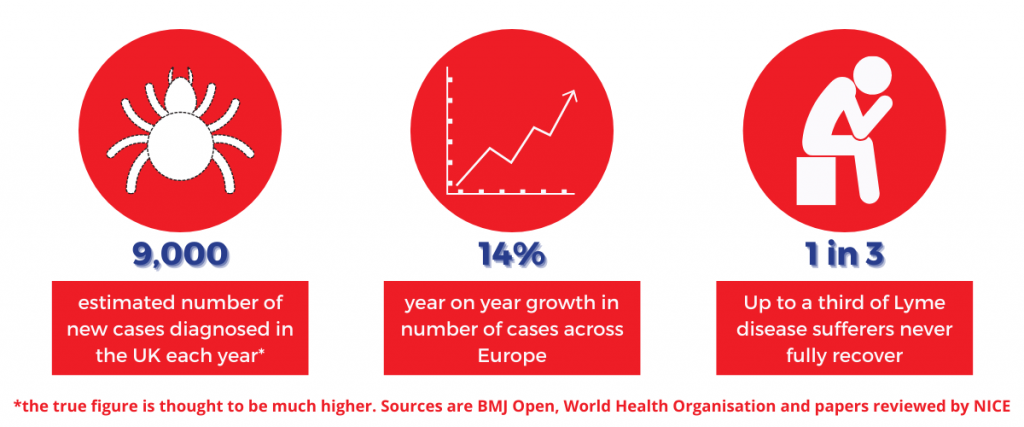Anyone can catch Lyme disease. It is an infection spread by tick bites that attacks the nerves, brain, heart, joints, and eyes, and can also cause skin rashes.
Lyme is the most common and fastest-spreading vector-borne disease in Europe, yet it is one of the most under-researched illnesses in the western world.

If spotted and treated quickly, most people can make a full recovery after a short course of antibiotics. However, the symptoms of Lyme disease are similar to a lot of other illnesses, making it tricky to diagnosis.
In fact, it is often called “the great imitator”. This is because it can mimic symptoms experienced in conditions like the flu, COVID 19, chronic fatigue syndrome, and even MS or Parkinsons Disease.
The only symptom that is individual to Lyme disease is the bull’s eye rash (also known as erythema migrans rash). But not everyone develops this.
Because early diagnosis is key, it’s important to know the symptoms to look out for, and how your doctor should be approaching testing and treatment, based on the latest NICE Guidelines.
Follow the links for more info, or navigate from our menu.
How do you catch it?
Lyme disease is caught through the bite of a tick that is infected with the Borrelia Burgdorferi bacteria.
You can come into contact with ticks when outside in parks, gardens, fields or forests. They feed on animals and humans.
Ticks attach themselves to their host and feed off the blood. Sometimes they transfer the Borrelia bacteria, which can become a Lyme disease infection.
Not all ticks carry the bacteria, but enough to take precautions and be aware of what to look out for.
Tick bite prevention
The best way to avoid Lyme disease is to avoid being bitten in the first place!
Check out our tips for protecting yourself, your family and your pets.
